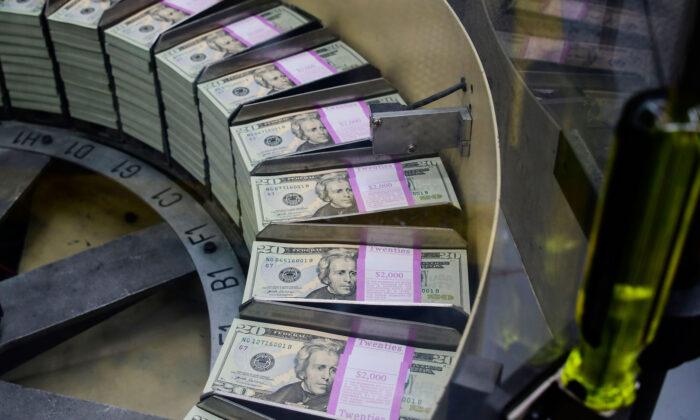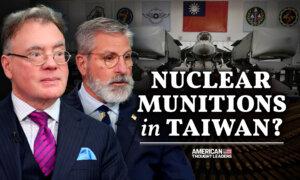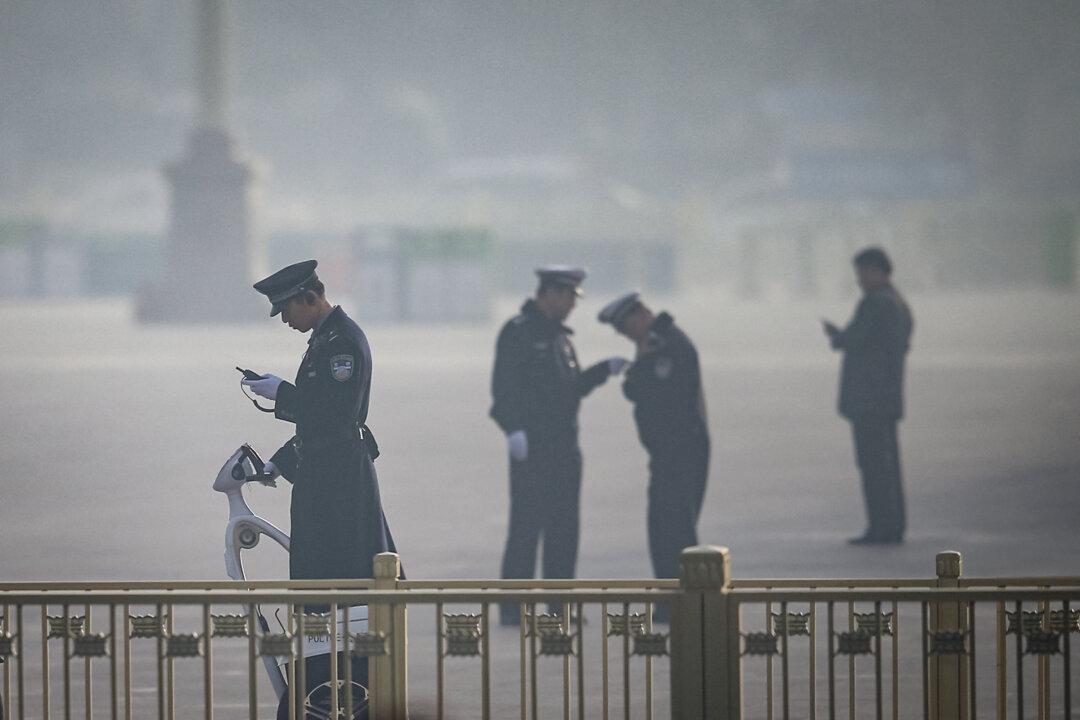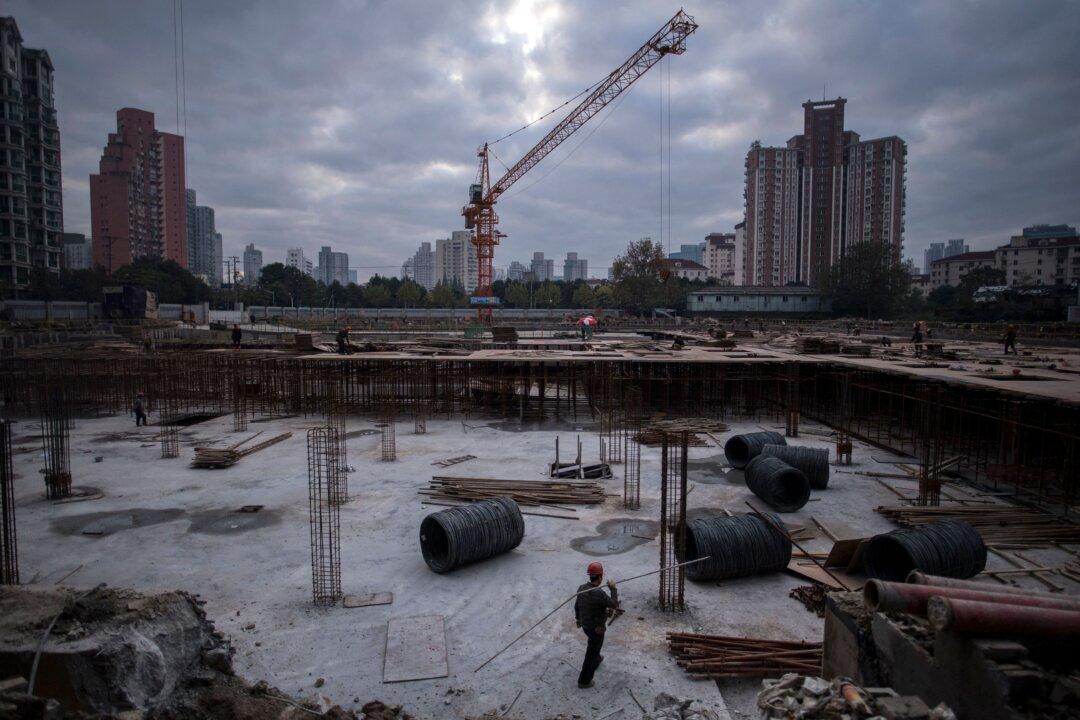The world economy has navigated turbulent waters in recent years, with challenges including a global pandemic, post-pandemic economic woes, geopolitical tensions, trade fragmentation, and rising financial stress. Major powers have responded by engaging in substantial over-issuance of currency, experts told NTD’s “Pinnacle View” program last week. However, the central bank policies may be aggravating global economic uncertainty.
China’s M2, the broadest measurement of money supply, has grown consistently over the past decade, reaching almost 300 trillion yuan—nearly 41.6 trillion U.S. dollars—at present. That amount is almost equal to the combined M2 supply of the United States, Europe, and Japan. The People’s Bank of China, China’s monetary authority, issued more than 11.9 trillion yuan ($1.64 trillion) last year—a record amount.
Despite the infusion of money, China’s economy is not growing at high speed, leaving economists to ask, “Where has the money gone?” Moreover, given the huge side effects of massive money printing, will the world economy be able to achieve a soft landing as analysts are predicting?
Multiple Factors Behind Current Inflation
Independent TV producer Li Jun said on the “Pinnacle View” program that the current surge in money issuance differs from previous episodes in that cash is being injected directly into households, particularly in the United States and Europe. This has led to an immediate increase in the money supply, adding to inflationary pressures. While the Federal Reserve’s continuous interest rate hikes over the past year and a half have shown some effect, inflation remains a persistent challenge.Mr. Li said he agrees with some analysts who believe that beyond the direct impact of money printing, several other factors are contributing to the current inflationary environment.
“The first factor is a shift in consumer spending patterns. Prior to the pandemic, consumer spending was shifting from goods to services. However, the pandemic has reversed this trend, with a sharp increase in consumption of goods. This surge in demand for essential goods has strained production capacity, leading to price increases,” Mr. Li said.
The second factor is rising labor costs, as the pandemic has also affected the labor market, particularly in North America and European countries. With many individuals leaving or opting out of the workforce during the pandemic, labor shortages have emerged. Employers face higher labor costs when hiring new workers, which translates into higher production costs and, consequently, higher prices for consumers.
Third, the pandemic has disrupted global supply chains that were previously optimized for cost efficiency. As countries now prioritize security and stability in their supply chains, supply chain restructuring has also contributed to upward pressure on prices.
According to Mr. Li, the combined effect of these factors is that inflation is not likely to ease in the near term.
While some analysts project a 70-80 percent chance of a soft landing for the global economy, JPMorgan Chase CEO Jamie Dimon has expressed a more pessimistic view, highlighting the potential for a more prolonged period of inflation, he said.
In a recent shareholder letter, Mr. Dimon said he sees much lower odds of a soft landing, given rising food and energy prices, steeper borrowing costs, and recession risks.
The Divergent Paths of Quantitative Easing
“Pinnacle View” panelist Frank Tian Xie is the John M. Olin Palmetto Chair professor in business and professor of marketing at the University of South Carolina Aiken. Mr. Xie said that many governments today promote the popular conception of Keynesian economics, namely, that government intervention—including printing money—can stabilize the economy.However, Mr. Xie continued, when these countries print money and create inflation, they are actually stealing the wealth of society.
Many nations that issue currency of their own have sovereign currencies, which means that the government has the power to print money, Mr. Xie explained.
“This power can be checked in countries where central banks operate independently,“ he said, ”but in others, such as China, the central bank is under the jurisdiction of the State Council, which allows unrestrained printing of money to satisfy the government’s political objectives.”
In an authoritarian model such as that of the Chinese Communist Party (CCP), “printing money will benefit the government first, and the rich can get loans at a good preferential rate, so this part of the population can also benefit, but the majority of the people will be at a disadvantage.”
Mr. Xie clarified a misconception that printing more money directly stimulates the economy. He explained that while a country’s Gross Domestic Product (GDP) may nominally increase due to inflation, real economic growth may not improve.
In a normal situation, economic growth should lead to the creation of new wealth, which then requires more money in circulation. In China, excessive money printing precedes actual economic growth, demonstrating that this strategy does not automatically lead to economic expansion.
Furthermore, despite significant money printing, China does not seem to be experiencing expected levels of inflation. Mr. Xie said this is because the government controls both the narrative and the calculation methods. While reported prices for certain items like food might remain stable, overall prices are indeed rising.
“There is also another reason: the money printed by the CCP was not distributed to consumers as it was in the United States,” Mr. Xie continued. “In the United States, stimulus money during the pandemic went directly to low- and middle-income individuals and small business owners ... In contrast, China channels its printed money to state-owned banks and enterprises, where it often covers existing debt or ends up in the hands of corrupt officials, leading to significant wealth inequality and hidden inflation. This situation is exemplified by the many Chinese officials caught with huge sums of money.”
Guo Jun, editor-in-chief of The Epoch Times Hong Kong edition, added that quantitative easing in China results in only about 5 percent of funds reaching the private sector, with the remainder bolstering state-owned entities, further straining the economic disparity between the state and the populace.
The Shifting Relationship Between Gold and the Dollar
According to Mr. Xie, the global economic structure and political structure are undergoing great changes. New trade blocs, national security, and military alliances are being formed. The old post-World War II international political and economic pattern is breaking down, but the new pattern is not yet fully finalized.“We are truly living in a turbulent time,” he said, adding that as a result of these major changes, traditional relationships between the U.S. dollar and gold are also shifting.
The relationship between the U.S. dollar and gold is often characterized as inverse, meaning that the two tend to move in opposite directions. This inverse relationship stems from the unique properties of both assets. Gold, with its limited supply and historical role as a store of value, is often seen as a haven during periods of economic uncertainty or geopolitical turmoil. In contrast, the U.S. dollar, as the world’s leading reserve currency, is closely tied to the strength of the U.S. economy.
“Generally speaking, when the U.S. economy is strong, when exports are strong, when the U.S. dollar is strong, investors won’t buy gold, they will buy U.S. dollars or U.S. dollar assets. So, when the U.S. dollar assets or the U.S. dollar is strong, gold is generally on the low side,” Mr. Xie said.
The problem today, in his opinion, is that although the dollar is strong, the purchasing power of the dollar has been weakened by inflation and excessive borrowing, debt, and spending on the part of the U.S. government. Nonetheless, he said, “the euro may be even worse, because in addition to printing more money and leftist economic policies, there is also the factor of the Russian-Ukrainian war, which has had the greatest impact on Germany and France.”
Further, he said, “China’s economy is in recession, with both imports and exports falling, so the Renminbi is weakening against the U.S. dollar.”
Ms. Guo added that the dollar and gold are both instruments of settlement between countries, a system established by the Bretton Woods Agreement in 1944.
Ms. Guo noted that after gold and the dollar were decoupled in 1971, the general rule is that “if you have a lot of money and you have confidence in the dollar, you will hold the dollar and gold will go down. When the market has no confidence in the dollar, you hold gold, so gold goes up.”
However, current trends show that gold and the dollar may rise simultaneously. Ms. Guo believes that this indicates a lack of market confidence in U.S. economic policies and global inflation outlooks. Many countries that hold international currencies choose to buy gold because they don’t trust the dollar, she said.
The most obvious example of this being China, which has been on a gold-buying spree over the last year and a half.
RMB Internationalization: a Dilemma
Beijing is pushing to internationalize China’s currency, the Renminbi (RMB), turning it into a currency that is used globally as a unit of account, medium of exchange, and store of value. As part of this process, the International Monetary Fund in 2016 added the RMB to the basket of currencies that make up the Special Drawing Right, or SDR—joining the U.S. dollar, the euro, the yen, and the British pound.Discussing the CCP’s ambition to internationalize the RMB, Mr. Xie said that the CCP actually finds itself in a dilemma due to its authoritarian nature.
“Of course, it wants to internationalize the Renminbi to be able to challenge the U.S. dollar and the euro. But the most fatal problem facing the CCP is that it does not dare to allow the free exchange of [the] Renminbi.
“If it really wants to internationalize, it must allow free conversion, and then the CCP will find that it may not be able to control the RMB exchange rate because it has printed so much money. And if the RMB suddenly depreciates, it will certainly lead to financial turmoil. Therefore, on the one hand, it wants to internationalize Renminbi, but in fact, it dares not and cannot let the Renminbi go international,” Mr. Xie explained.
Ms. Guo said that uncertainty about China’s future, uncertainty about U.S.–China relations, and geopolitical tensions are contributing to Chinese insecurity;
“The fact that housing, which used to be the form of personal wealth in China, is now falling across the board, and that gold sales are booming in China, suggests that the Chinese are feeling insecure about the country’s future,” she said.
One reason for China’s gold-buying spree is the fear that the U.S. dollar may depreciate, Ms. Guo commented. Another significant motivation: China knows that if it starts a war, for example against Taiwan, its U.S. dollar assets will be frozen.
“For the CCP, gold, blockchain, and digital currencies may be safer,” she added. “I am afraid that these phenomena do not reflect the problem of China alone. Instead, these signs suggest a more fundamental change happening on the global economic scene, with wealth distribution and power dynamics shifting.
“The next twenty years could be a very turbulent time for both the United States and the entire world, so we'd better be prepared for what’s coming.”







